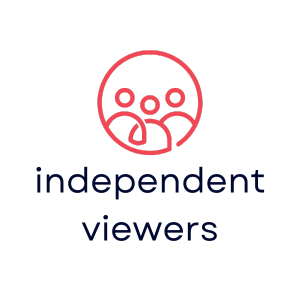In the bustling world of digital marketing, two terms often steal the spotlight: content curation and content creation. While they might sound like the latest dance moves at a hip party, these concepts serve different purposes in the content ecosystem. Understanding the difference between them can be the key to unlocking your brand’s online potential.
Which of the Following Best Describes the Difference Between Content Curation and Content Creation?
Content curation involves the process of gathering, organizing, and sharing relevant information from various sources. This approach helps brands provide value while maintaining engagement with their audience.
Definition of Content Curation
Content curation refers to selecting and sharing existing content that resonates with a target audience. It encompasses identifying high-quality articles, videos, and images that align with specific interests. Curation serves to present information in a meaningful way, helping audiences discover and comprehend topics without creating original content.
Examples of Content Curation
Examples of content curation include creating a weekly newsletter featuring industry news or sharing insightful blog posts on social media. Additionally, businesses may use curated content to enhance their websites by presenting resourceful articles in specific categories. Curated lists, such as “top 10 must-read books,” also demonstrate effective curation practices. Marketers often employ tools like Feedly or Scoop.it for efficient content curation, ensuring they leverage valuable resources to enrich their audience’s experience.
Understanding Content Creation

Content creation involves producing original materials designed to inform, entertain, or engage an audience. This process encompasses various formats, including text, video, audio, and images, which attract and retain viewers’ attention.
Definition of Content Creation
Content creation refers to the act of generating new content that adds value to a brand’s online presence. This original content addresses specific interests or needs of a target audience. It encompasses crafting blog posts, videos, podcasts, and infographics to convey messages effectively. Engaging content creation fosters connections and enhances brand recognition.
Examples of Content Creation
A variety of formats demonstrate content creation in action. Blog posts provide detailed insights into industry trends or solutions. Video tutorials educate audiences about products or services. Social media posts engage followers with interactive content, including polls and quizzes. Podcasts present discussions on relevant topics, reaching listeners wherever they are. Infographics deliver complex information visually, making it easy to understand. These examples illustrate the impact of well-crafted content on audience engagement and brand loyalty.
Key Differences Between Content Curation and Content Creation
Content curation and content creation distinguish themselves through their intent, purpose, and the processes involved. Understanding these differences enhances strategic content approaches.
Intent and Purpose
Content curation aims to assemble and share relevant information from various sources. This process focuses on providing valuable insights and resources that resonate with an audience. Curators select high-quality articles, videos, and images aligned with specific interests. In contrast, content creation centers on producing original materials. This type seeks to inform, entertain, or engage a target audience, fulfilling their specific needs. Effective strategies in each area contribute to maximizing audience engagement and brand loyalty.
Process and Effort
The process of content curation involves gathering existing materials, organizing them, and sharing them effectively. Curators rely on tools like Feedly and Scoop.it to streamline these tasks efficiently. On the other hand, content creation requires substantial effort in developing new ideas, researching, and producing content. This often entails scriptwriting, filming videos, or designing infographics. Each approach demands distinct skill sets, highlighting the varying levels of creativity and labor involved in building a brand’s online presence.
Benefits of Content Curation
Content curation offers several advantages that enhance a brand’s online strategy.
Increased Engagement
Curation keeps audiences engaged by offering valuable insights and resources. Curated content addresses specific interests, which boosts user interaction and extends time spent on platforms. It cultivates community by sharing diverse viewpoints from the industry. Curators can also highlight user-generated content, promoting feedback and discussion. This interaction fosters deeper connections between brands and followers. Engaging posts lead to higher shares and increased visibility across social platforms. The combination of relevant content and audience participation creates a dynamic environment, ensuring sustained interest and loyalty.
Time Efficiency
Streamlining content efforts becomes possible with curation. Content curators gather existing materials, which saves significant research and development time. It enables marketers to focus on strategizing and optimizing distributions rather than content production. Given the abundance of available resources, identifying high-quality articles and media can happen swiftly. Fast-tracking content delivery keeps brands current with trends and discussions. Moreover, employing tools like Feedly or Scoop.it aids in managing the curation process, simplifying updates and social sharing. Efficiency in curation directly correlates to a strong online presence, allowing brands to stay relevant in a fast-paced digital landscape.
Benefits of Content Creation
Content creation brings unique advantages that enhance a brand’s presence online. One primary benefit lies in its originality, which directly impacts branding.
Originality and Branding
Original content fosters a distinctive brand identity, setting businesses apart from competitors. Crafting unique messages or visual elements strengthens brand recognition. Audiences appreciate authenticity; they engage more deeply with brands showcasing originality. Consistent content creation builds familiarity with the brand voice, cultivating trust and loyalty. Developing a signature style across platforms reinforces brand values, making them memorable. Thus, originality acts as a powerful tool for shaping a brand’s perception and positioning in the market.
Audience Connection
Creating content directly engages audiences, enhancing both connection and interaction. Relatable stories or valuable insights resonate with specific interests, drawing in targeted demographics. This engagement encourages social sharing, broadening reach within community circles. Through feedback and comments, brands gain insights into audience needs, refining future content strategies. Regular interaction fosters a sense of belonging among audiences, encouraging them to form communities around the brand. Consequently, content creation not only attracts attention but also nurtures lasting relationships with followers.
Understanding the difference between content curation and content creation is essential for effective digital marketing. While content curation focuses on gathering and sharing existing materials that resonate with an audience, content creation involves producing original content that informs and engages. Each approach plays a vital role in building a brand’s online presence.
By leveraging both strategies, marketers can enhance audience engagement and foster brand loyalty. Content curation provides valuable insights and saves time, while content creation establishes a unique brand identity and deepens connections with followers. Together, they create a comprehensive content strategy that drives success in the digital landscape.

